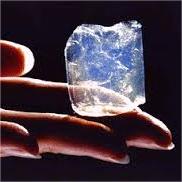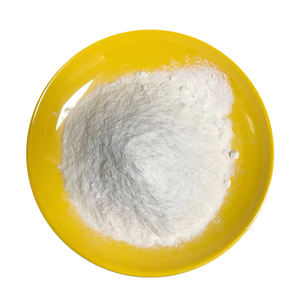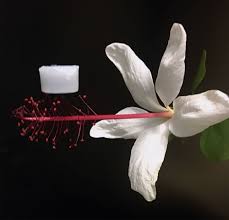Professional industry ceramic supplier, silicon nitride, silicon carbide, aluminum nitride and any other kinds of ceramics.
PRODUCT PARAMETERS
Description
Overview of Hydrophilic Type Hydrophobic Type Nano Silica Aerogel Powder
Hydrophilic Type Hydrophobic Type Nano Silica Aerogel Powder is a synthetic porous ultralight material derived from a gel, in which the liquid component has been replaced with a gas. The result is a solid with extremely low density and low thermal conductivity, often nicknamed “frozen smoke.” Despite its fragile appearance, it can be engineered to be remarkably strong, holding the title of the world’s best insulating solid material.
Features of Hydrophilic Type Hydrophobic Type Nano Silica Aerogel Powder
-
World’s Lowest Thermal Conductivity: Provides unparalleled insulation performance, far superior to traditional materials.
-
Extremely Low Density: One of the lightest solid materials known to man, with a composition of up to 99.8% air.
-
High Surface Area: Possesses an incredibly large internal surface area, making it valuable for filtration and absorption applications.
-
Versatile Composition: Can be made from various materials, including silica, carbon, and metal oxides, each with unique properties.
-
Exceptional Porosity: Its nanoporous structure is responsible for its outstanding insulating capabilities.
Specifications of Hydrophilic Type Hydrophobic Type Nano Silica Aerogel Powder
Hydrophilic nano silica aerogel powder absorbs water easily. This type is highly porous. It has an extremely low density. Expect values around 0.05 to 0.1 g/cm³. Its surface area is very large. Specific surface area typically measures 600 to 1000 m²/g. The pore size is mostly between 10 and 50 nanometers. This powder appears as a fine white dust. It feels very light and dry. Thermal conductivity is low. It ranges from 0.015 to 0.025 W/(m·K). This powder works well in applications needing moisture uptake. It is often used in scientific research. It serves as a catalyst support. It finds use in certain insulation areas.
Hydrophobic nano silica aerogel powder repels water. This is its main difference. It shares the low density of the hydrophilic type. Density is also about 0.05 to 0.1 g/cm³. Surface area remains high. Specific surface area is similar, 600 to 1000 m²/g. Pore size is comparable too. The key advantage is water resistance. It maintains low thermal conductivity even in humid conditions. Thermal conductivity stays around 0.018 to 0.030 W/(m·K). This powder keeps its insulating power with moisture present. It is ideal for building insulation. It works well in pipe insulation. It is used in industrial equipment lagging. It appears as a fine white powder also. It feels light and dry. It handles higher temperatures. The hydrophobic treatment increases its usable range. It withstands temperatures up to about 300°C.
Applications of Hydrophilic Type Hydrophobic Type Nano Silica Aerogel Powder
Hydrophilic and hydrophobic nano silica aerogel powders are super light materials full of tiny pores. They come as fine powders. Both types offer amazing insulation because they trap air incredibly well. They are also non-toxic and safe to handle. The key difference is how they react to water. This difference decides their best uses.
Hydrophilic nano silica aerogel powder loves water. It absorbs moisture easily. This makes it perfect as a drying agent. It protects sensitive electronics during shipping and storage. Factories use it to keep moisture away from products. The pharmaceutical industry relies on it to keep drugs dry and stable. This powder also works well mixed into building materials. Added to cement or plaster, it stops heat loss. It strengthens the final product. It fills tiny spaces effectively. This improves the material’s overall performance.
Hydrophobic nano silica aerogel powder hates water. It repels moisture completely. This is vital for insulation in damp places. It keeps working even in wet conditions. It’s the top choice for insulating pipes carrying hot oil or chemicals. Cold storage units and building walls use it widely. It prevents heat escape. It stops thermal bridging effectively. The powder form blends easily into coatings or composites. This creates thin, powerful insulation layers. Outdoor equipment and clothing benefit from its water resistance and warmth. It keeps things dry and insulated.
Company Profile
Tanki New Materials Co.Ltd. focus on the research and development, production and sales of ceramic products, serving the electronics, ceramics, chemical and other industries. Since its establishment in 2015, the company has been committed to providing customers with the best products and services, and has become a leader in the industry through continuous technological innovation and strict quality management.
Our products includes but not limited to Aerogel, Aluminum Nitride, Aluminum Oxide, Boron Carbide, Boron Nitride, Ceramic Crucible, Ceramic Fiber, Quartz Product, Refractory Material, Silicon Carbide, Silicon Nitride, ect. please feel free to contact us.

Payment Methods
T/T, Western Union, Paypal, Credit Card etc.
Shipment Methods
By air, by sea, by express, as customers request.
5 FAQs of Hydrophilic Type Hydrophobic Type Nano Silica Aerogel Powder
This powder is silica aerogel. It’s made from tiny silica particles. It has lots of air pockets. This makes it very light. It’s also a great insulator.
What is nano silica aerogel powder?
It’s a super-light material. It looks like powder. It feels dry. It’s mostly air inside tiny silica structures. This structure gives it amazing insulating power. It blocks heat transfer very well.
Hydrophilic or hydrophobic – what’s the difference?
Hydrophilic powder attracts water. It soaks up moisture easily. Hydrophobic powder repels water. Water beads up on its surface. It doesn’t absorb moisture. The choice depends on your needs. Need moisture resistance? Pick hydrophobic. Need water absorption? Pick hydrophilic.
How hot or cold can it handle?
It handles extreme temperatures. Hydrophobic types work well up to about 200-250°C. Hydrophilic types can handle higher heat, sometimes over 600°C. Both types insulate in very cold conditions too, like cryogenics. They stay stable.
Is it safe to handle?
Handle it carefully. It’s a very fine powder. Don’t breathe it in. Wear a dust mask. Wear gloves. It can irritate skin and lungs. Follow safety data sheet instructions. Keep it contained. Use good ventilation.
Where is it mostly used?
Its main job is insulation. It fills thin spaces needing high thermal resistance. Think building panels or pipe insulation. It goes into special coatings. Scientists use it in labs. Hydrophobic powder is good for outdoor uses. It protects against dampness. Hydrophilic powder works well in dry, high-heat situations.
REQUEST A QUOTE
RELATED PRODUCTS

Promotion Silica Aerogel Fibre Fireproof aerogel Insulation

Insulated nano aerogel silicate insulating blanket thermal conductivity aerogel felt for Wall Building Insulation

DIY xps board silica aerogel

Special customized Triple-sided shaped polishing&drawing/Aerogel blanket sanding machine/Magnesium glass panel drawing machine

Special customized Triple-sided shaped polishing&drawing/Aerogel blanket sanding machine/Magnesium glass panel drawing machine



